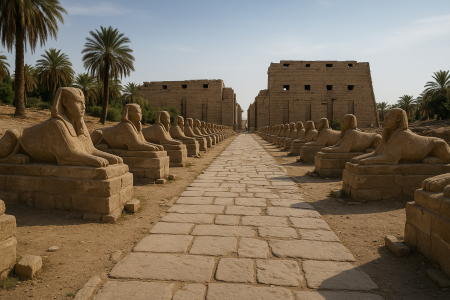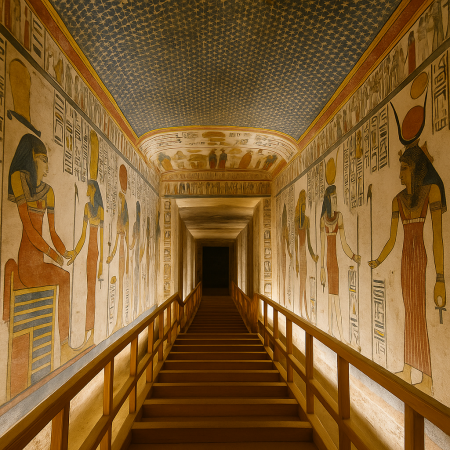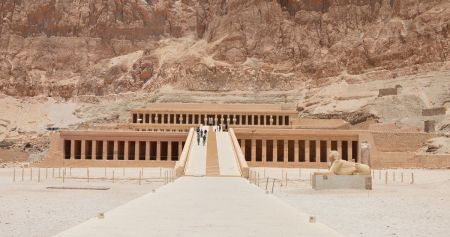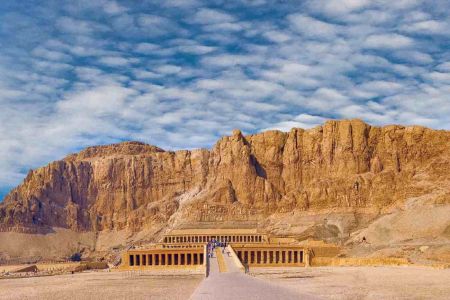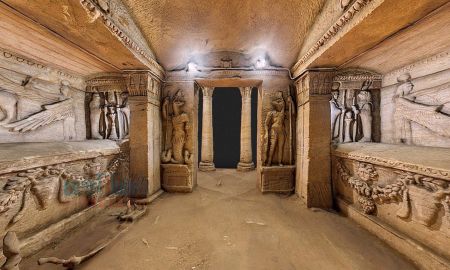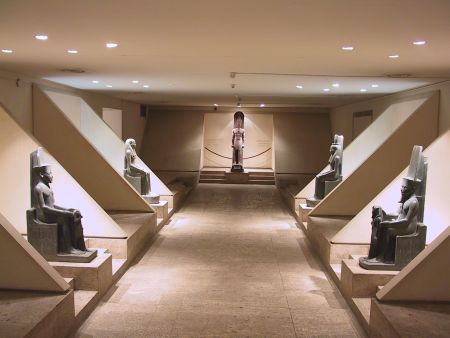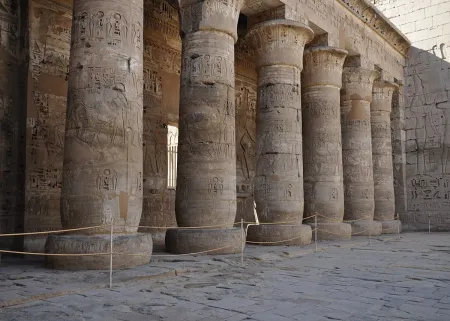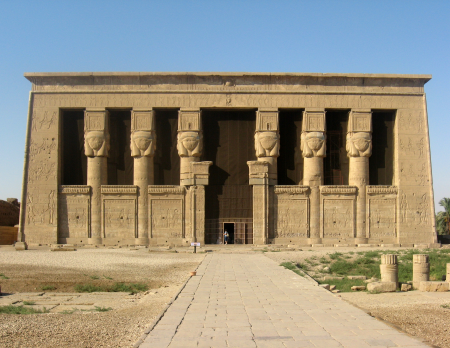Valley of the Queens:the Eternal Queens of Ancient Egypt
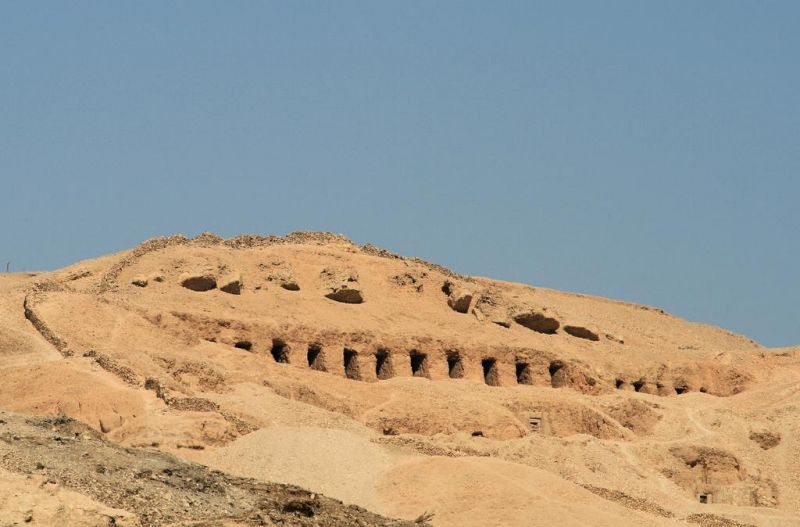
Unveiling the Valley of the Queens: A Hidden Necropolis of Royal Women
Tucked quietly on the west bank of the Nile near Luxor, Egypt, lies the hauntingly beautiful Valley of the Queens—a lesser-known yet historically rich counterpart to the more famous Valley of the Kings. Carved deep into the barren Theban hills, this necropolis is the final resting place of queens, princesses, and royal children of Egypt’s New Kingdom, particularly from the 18th to the 20th Dynasties (circa 1550–1070 BCE).
Originally called Ta-Set-Neferu, meaning “The Place of Beauty,” the valley was more than just a burial site—it was a sacred zone designed to ensure the divine rebirth of its inhabitants. With over 90 known tombs, many adorned with exquisite art and intimate scenes of the afterlife, the Valley of the Queens provides an intimate window into royal life, religious beliefs, and artistic mastery of Ancient Egypt.
Unlike the heavily visited Valley of the Kings, this valley still retains an air of mystery and serenity, attracting travelers looking to explore ancient Egyptian history without the crowds. Its star attraction—the tomb of Queen Nefertari, wife of Ramesses II—is considered the most beautiful in all of Egypt, if not the world. This once-forgotten site has now become a must-see destination for archaeologists, historians, and curious travelers seeking to unlock the secrets of the ancient queens.
Historical Background of the Valley of the Queens
Purpose and Religious Significance
The Valley of the Queens was chosen as a royal necropolis for strategic and spiritual reasons. Located close to the Valley of the Kings and Deir el-Medina—the workers' village—the site offered easy access for tomb builders while also being linked to the sacred landscape of Thebes. The presence of the nearby sacred grotto dedicated to Hathor, goddess of motherhood and fertility, further justified the valley’s religious significance. Hathor was believed to assist in the safe passage to the afterlife, particularly for royal women.
Burials in the valley began during the 18th Dynasty but flourished under the 19th and 20th Dynasties, especially during the reigns of Seti I and Ramesses II. As the New Kingdom rulers sought to consolidate religious and political power, burying queens in a distinct location emphasized their divine status and preserved their memory independently of the male rulers.
Who Was Buried in the Valley of the Queens?
This necropolis is home to a wide range of elite individuals:
-
Queens such as Nefertari, Titi, and Nebettawy
-
Royal daughters and wives of pharaohs
-
Sons of kings, like Prince Amun-her-khepeshef
The tombs vary in size and complexity. Some are simple shafts, while others feature elaborate chambers with vivid murals. These burial sites collectively offer a timeline of Egypt’s mortuary practices, fashion, and familial hierarchies.
Tomb of Queen Nefertari: The Crown Jewel of the Valley
Nefertari’s Tomb (QV66): A Masterpiece of Ancient Art
The most celebrated tomb in the Valley of the Queens is that of Queen Nefertari, the favorite wife of Pharaoh Ramesses II. Known as QV66, her tomb is hailed for its exceptionally well-preserved wall paintings, which showcase the queen in graceful poses, adorned in flowing white linen, golden jewelry, and divine regalia.
The tomb’s artwork isn't just decorative—it’s deeply symbolic. The walls illustrate scenes from the Book of the Dead, guiding Nefertari through the treacherous path of the afterlife. Hieroglyphs narrate spells, prayers, and rituals intended to protect her spirit and ensure eternal life. The colors, still vivid after over 3,000 years, testify to the skill and devotion of the artists who crafted them.
Due to its fragility, QV66 is only open to a limited number of visitors per day, making entry both exclusive and unforgettable.
Restoration and Preservation Efforts
In the 1980s, the tomb underwent major restoration led by the Getty Conservation Institute and the Egyptian Antiquities Organization. Crumbling plaster, water damage, and salt crystallization had jeopardized the tomb’s artwork. The restoration not only stabilized the structure but also brought back the stunning vibrancy of the paintings, allowing the world to witness ancient Egyptian artistry at its finest.
Architectural Features and Tomb Layouts in the Valley
Common Design Elements
Most tombs in the Valley of the Queens follow a linear plan with an entrance corridor leading to a main chamber and a burial niche. However, the complexity and decoration depend on the rank of the individual buried. High-status tombs like Nefertari’s include multiple rooms, vaulted ceilings, and elaborate wall scenes.
Decorative themes often include:
-
Solar motifs and deities
-
Scenes from the Book of Gates and Amduat
-
Offerings to Osiris, Anubis, and Hathor
-
Depictions of the deceased in ceremonial dress
Use of Color and Symbolism
Color held deep meaning in Egyptian art. Red symbolized life and power; blue represented the Nile and rebirth; yellow stood for divinity and eternity. These palettes, combined with intricate symbolism, turned the tombs into spiritual vehicles for resurrection.
Valley of the Queens vs. Valley of the Kings: Key Differences
Who Was Buried Where?
The Valley of the Kings was designated for pharaohs and elite male officials, while the Valley of the Queens housed royal women and children. Though both sites reflect the grandeur of New Kingdom funerary traditions, their themes and iconography differ. Female tombs often emphasize maternal symbols, fertility, and nurturing deities like Isis and Hathor.
Size and Tourist Traffic
While the Valley of the Kings boasts more extensive tombs and greater tourism, the Valley of the Queens offers a quieter, more personal experience. Its tombs are smaller but often more delicately decorated.
Visiting the Valley of the Queens Today
Location and Access
The Valley of the Queens is located just a few kilometers from the Valley of the Kings, on the west bank of the Nile near Luxor. Visitors can reach it by taxi, tour bus, or Nile cruise excursions. The site is typically part of a half-day itinerary that also includes Deir el-Medina and Medinet Habu.
Ticket Information and Opening Hours
-
Opening Hours: 6 AM to 5 PM daily
-
Ticket Cost: General admission includes access to three tombs, but entry to Nefertari’s tomb requires a separate, high-cost ticket due to preservation efforts.
Tips for Visitors
-
Book Nefertari’s tomb tickets in advance
-
Visit early in the day to avoid heat
-
Combine your visit with a trip to Deir el-Medina
-
Hire a licensed Egyptologist for in-depth historical insights
Ongoing Excavations and Discoveries
Archaeological work continues in the Valley of the Queens, revealing new tombs and reinterpreting old finds. Recent digs have unearthed tombs of royal sons, unused burial shafts, and fragments of funerary objects. These discoveries continue to shape our understanding of dynastic Egypt, gender roles, and religious transformation.
International Collaborations and Digital Mapping
Thanks to partnerships between Egyptian authorities and global institutions, digital documentation of the tombs now helps preserve and study the art without disturbing fragile environments. 3D scanning, photogrammetry, and virtual tours are making the valley more accessible to scholars and enthusiasts worldwide.
Why the Valley of the Queens Still Matters Today
Beyond its visual splendor, the Valley of the Queens provides critical insight into the roles of royal women, dynastic succession, and spiritual life in ancient Egypt. It honors the queens not just as consorts of kings but as powerful figures in their own right—guardians of legacy, symbols of fertility, and intercessors between the divine and mortal worlds.
FAQs About the Valley of the Queens
Where is the Valley of the Queens located?
The Valley of the Queens lies on the west bank of the Nile near Luxor, Egypt, just southwest of the Valley of the Kings.
Who is buried in the Valley of the Queens?
Mainly royal women from Egypt's New Kingdom period, including queens, princesses, and sons of pharaohs.
What is the most famous tomb in the Valley of the Queens?
Queen Nefertari’s tomb (QV66) is the most famous and is widely considered the most beautifully decorated in all of Egypt.
Is it worth visiting the Valley of the Queens?
Absolutely. Its tombs are less crowded and offer unique, high-quality artwork and a deeper perspective into royal life.
How many tombs are in the Valley of the Queens?
There are over 90 tombs, though only a few are open to the public due to preservation concerns.
Can you visit Queen Nefertari’s tomb?
Yes, but it requires a separate ticket that is more expensive and has limited daily availability due to conservation measures.
Final Thoughts on the Timeless Allure of the Valley of the Queens
The Valley of the Queens is more than an archaeological site—it’s a tribute to female power, beauty, and eternal life. From the sacred artwork to the intimate tombs nestled in the desert cliffs, this ancient burial ground captivates the imagination and invites travelers to walk among queens whose stories still echo across the sands of time.


